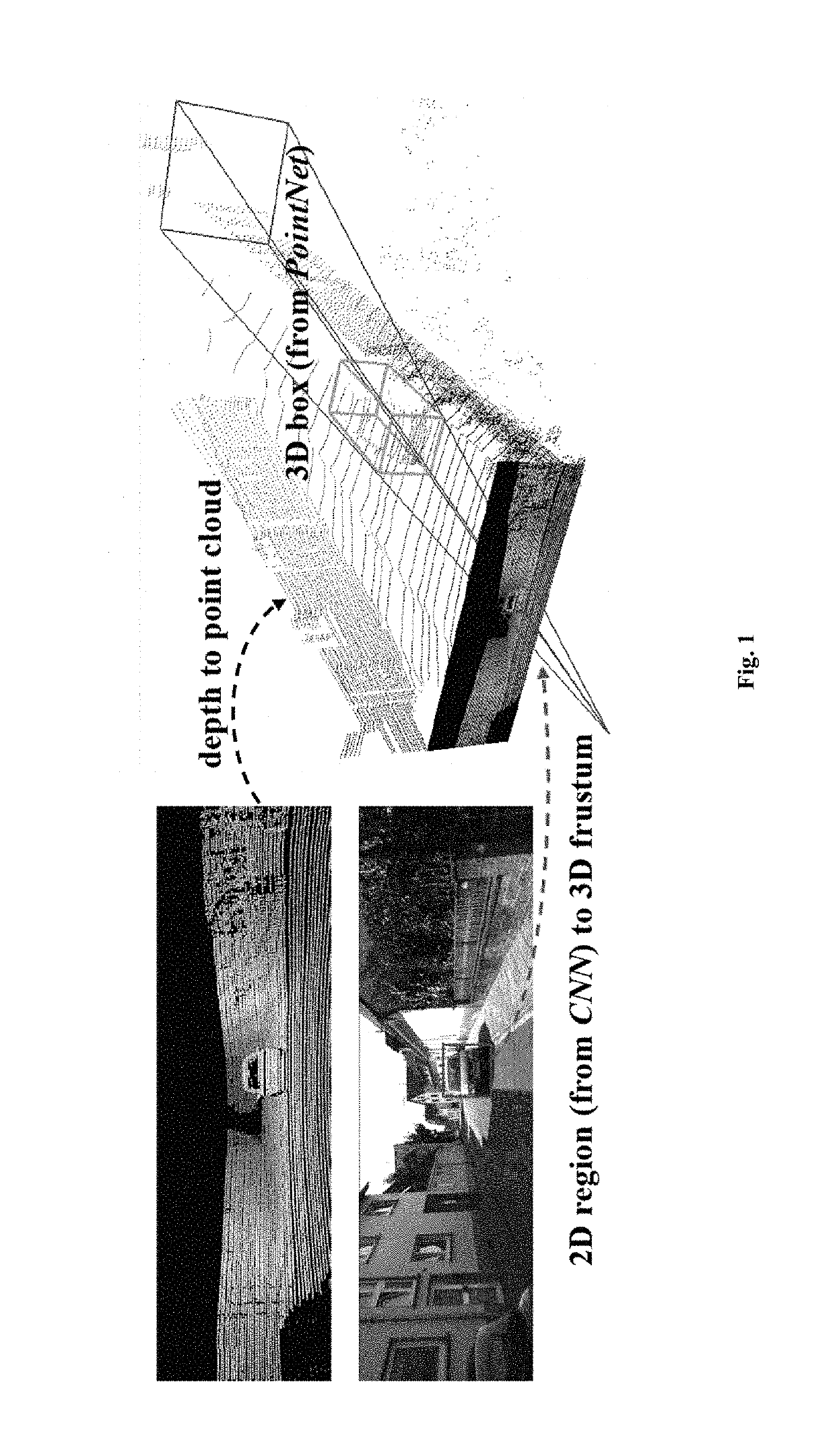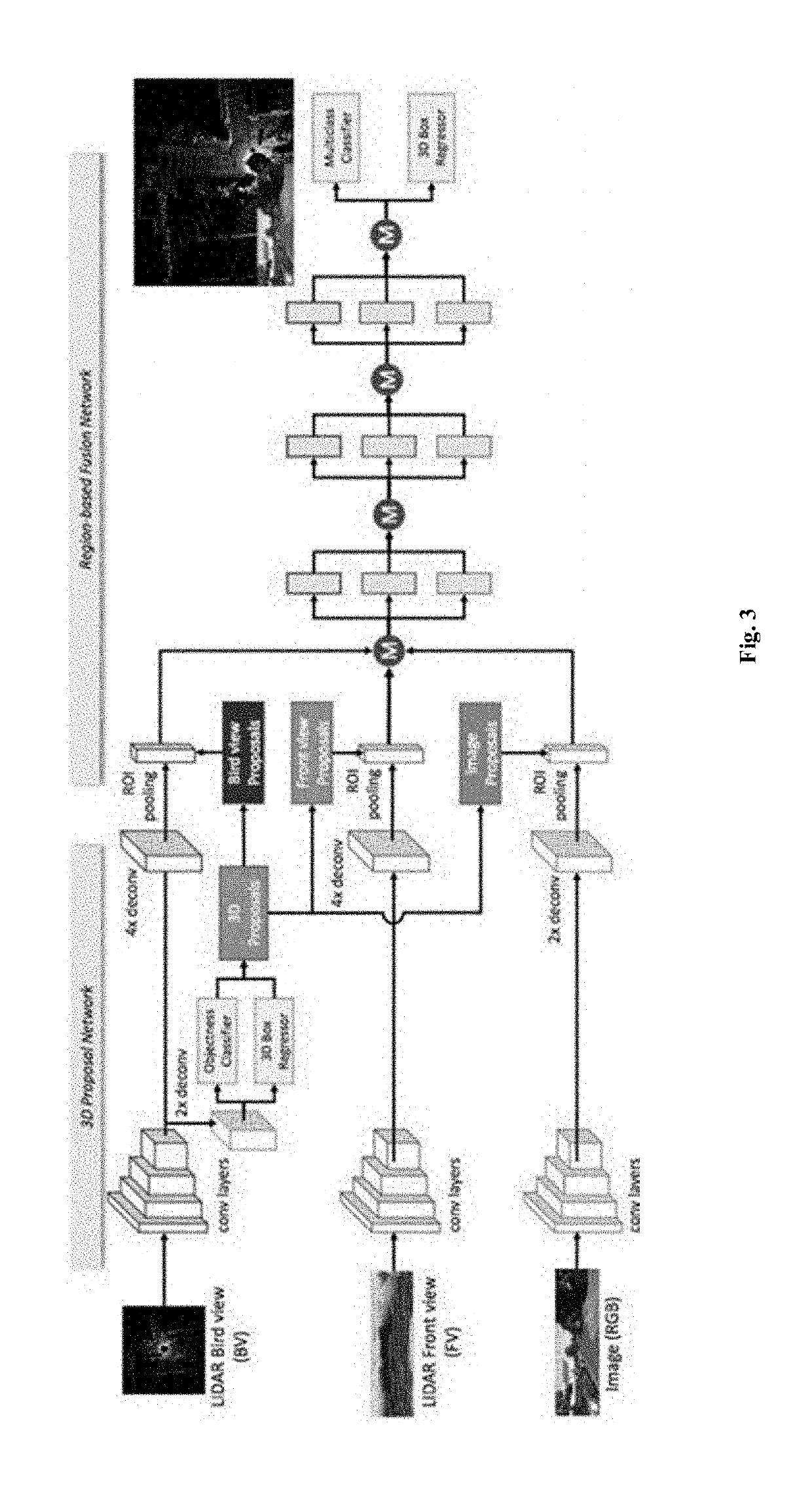Three-dimensional object detection for autonomous robotic systems using image proposals
a technology of autonomous robotic systems and image proposals, applied in the field of three-dimensional object detection for autonomous robotic systems using image proposals, can solve the problems of inability to perform real-time methods, low sample point density of 3d point clouds,
- Summary
- Abstract
- Description
- Claims
- Application Information
AI Technical Summary
Benefits of technology
Problems solved by technology
Method used
Image
Examples
example 1
ng a Pedestrian Behind a Parked Car
[0111]In one non-limiting example herein, a LiDAR on an autonomous vehicle captures a two-dimensional image data and three-dimensional depth data of the road it is driving on, using an optical camera, and a depth sensor, respectively. The system of the present disclosure generates an attention region in the two-dimensional image data corresponding to a pedestrian waiting to cross the street, wherein the pedestrian is partially obstructed from the perspective of the autonomous vehicle by a parked car. The system then extracts a three-dimensional frustum from the depth data corresponding to the attention region, wherein the frustum encompasses the pedestrian.
[0112]The system then generates and regresses an oriented three-dimensional boundary around the whole shape of the pedestrian although the pedestrian is partially hidden behind the parked car, and classifies the pedestrian as a potential road hazard. Knowing it speed and location, the autonomous ...
PUM
 Login to View More
Login to View More Abstract
Description
Claims
Application Information
 Login to View More
Login to View More - R&D
- Intellectual Property
- Life Sciences
- Materials
- Tech Scout
- Unparalleled Data Quality
- Higher Quality Content
- 60% Fewer Hallucinations
Browse by: Latest US Patents, China's latest patents, Technical Efficacy Thesaurus, Application Domain, Technology Topic, Popular Technical Reports.
© 2025 PatSnap. All rights reserved.Legal|Privacy policy|Modern Slavery Act Transparency Statement|Sitemap|About US| Contact US: help@patsnap.com



